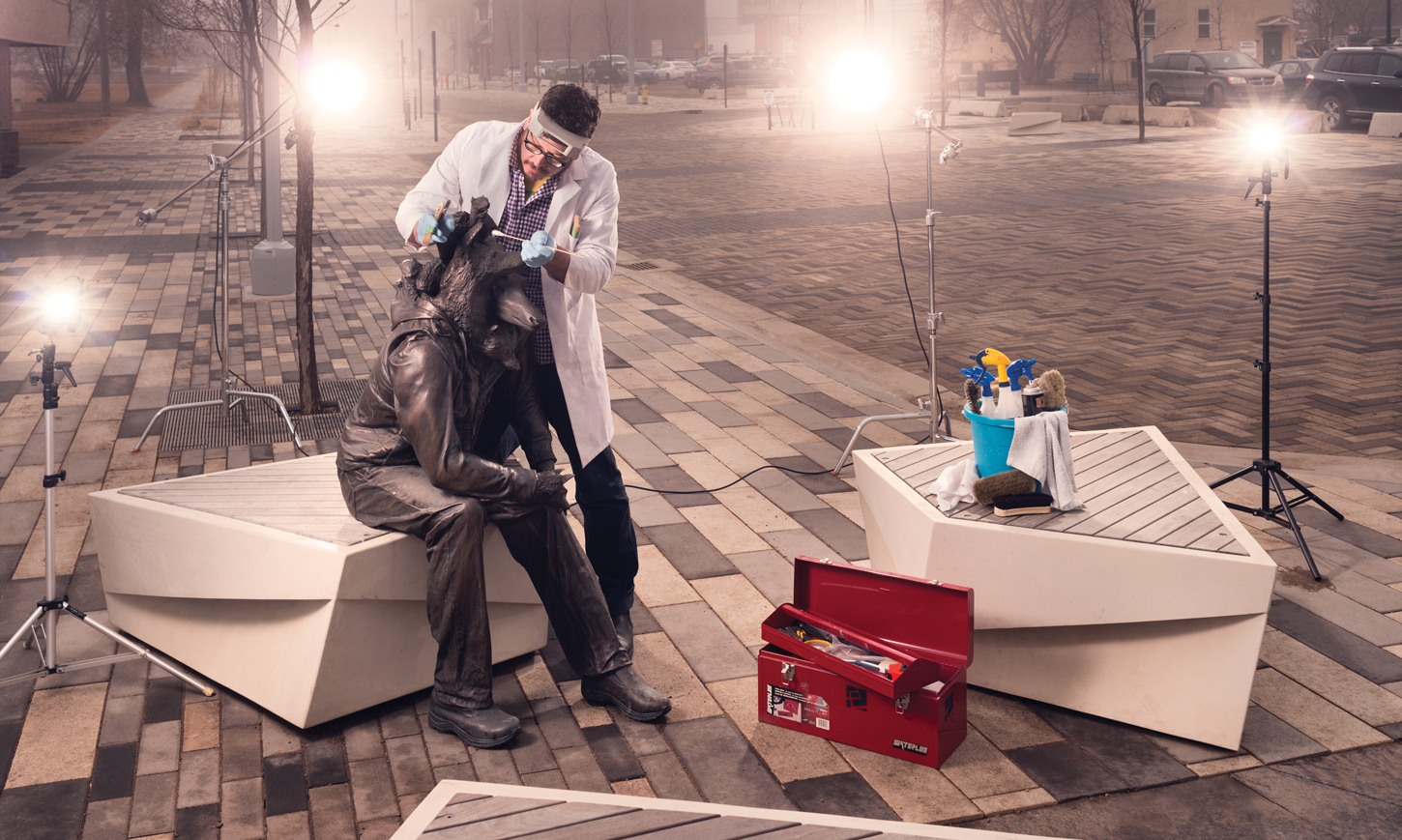David Turnbull stands by a piece of public art in The Quarters area and brushes his hand along part of it. “Wildlife,” by Hamilton, Ont. artist Brandon Vickerd, is a collection of two bronze statues humorously designed to look like humans, but is really composed of animals and clothing. They stand on opposite sides of 96th Street in The Quarters; they are a conversation about our relationship with nature in an urban setting.
Turnbull, the director of conservation at the Edmonton Arts Council, brushes dust off the back of one of the pieces, picks at some dirt collected in one of the ears of the bronze animals, the way a parent might do to a child.
“Do I think of public art pieces in Edmonton as my children? They are definitely my children,” Turnbull says with a laugh. “Especially the ones that I saw from the very beginning, all the way through to installation, and on. I’ve known them their whole lives, so they are totally my kids. Pieces like this are nice because once the patina on the bronze wears away, as the natural colour of the bronze comes out, they start to take on this life and a history.”
Although these kids of Turnbull’s on 96th Street are still quite young – the pieces were installed in 2015 – there are streaks of green on the base, a clear sign of oxidation. Then he spies another, less obvious stain on the back about a foot off the ground. “And that would be dog pee. Or from a human.” He pauses and shrugs. “That’s one thing with people interacting with public art. You want people to see it, you want people to interact with it, you want people to enjoy it, you want them to remember it, that’s what it’s all about. You can move it back from the road to prevent it from getting splashed, but you can’t stop someone from letting their dog pee on it.”
Urine aside, the job, which he’s held since 2009, comes with its unique challenges. First off, public art conservation is a new concept. You can count on one hand the number of municipalities in North America with such programs; none, save for Edmonton, are in Canada.
